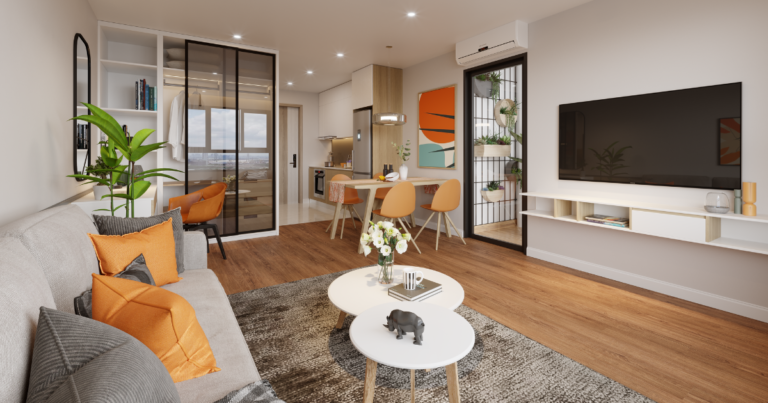Micro-condominiums often emerge as a solution to rising prices, promising a more affordable entry point to ownership for first-time buyers or investors. But this affordability comes with trade-offs that buyers are increasingly weighing.
In Ottawa, Raymond Chin of Coldwell Banker First Ottawa Realty has watched the interest in micro-units dry up almost entirely.
“The demand is actually very low,” the Realtor says, noting that in June, residential prices increased about nine per cent while the condominium market dropped about seven per cent. “Two-bedroom condominiums, or even a one-bedroom plus den, are much more sought after than just a one-bedroom or these bachelor-types.”
Shifting buyer priorities
Though new units may appear affordable on paper, often ranging from $320,000 to $375,000, Chin notes, he says the buyer pool is limited — mostly comprising first-time buyers or downsizers with limited options, not retirees with a nest egg ready to move south. Investors, meanwhile, remain very conservative and hesitant to dive into these smaller condominiums.
Buyer preferences have evolved significantly since the pandemic reshaped lifestyles and work habits. Chin explains that before COVID, proximity to downtown workplaces and amenities drove demand for compact living, but that dynamic has changed in Ottawa.
“You get from city to city, end to end, in maybe half an hour with no traffic. Commute times are fairly short compared to bigger cities like Toronto … (here), a lot of people take an Uber downtown, to live in a bigger, better, quieter place.”
A supply surge and investor shift
In Calgary, Rob Vanovermeire, broker/owner of Coldwell Banker Mountain Central, is also seeing sluggish movement in the smallest condominium segment, which he notes has historically been and remains a small inventory pool.
“Calgary, percentage-wise, doesn’t have as many micro-units as some of the bigger markets like Vancouver and Toronto. We just haven’t built them.”
He notes the condominium market hit its peak in 2015, followed by a downturn that lasted until 2021. While activity surged again in 2022, largely due to investors from Ontario and British Columbia, many of those buyers were targeting presales, not resale micro-units.
When it comes to micro-condominiums, Vanovermeire says those buyers are typically single professionals or couples, and he hasn’t seen many older than 35 years old.
Regardless of size, Vanovermeire notes Calgary’s resale condominium absorption is down, with roughly 22 per cent of total units selling.
The power of narrative
Vanovermeire’s optimistic that small condominiums still have a market — but only if agents put in the right work and know how to sell the lifestyle that comes with them.
“What’s been really successful for me is video tours,” he recalls. “But not just a quick introduction and let the video play some music as you tour the condominium.”
Instead, Vanovermeire takes a more immersive, personalized approach to help buyers envision life in a small space.
“You have to be willing to treat the camera like it was a buyer and point out the lifestyle, amenities in the building and what’s offered in the area,” he explains, including the things you wouldn’t be doing at home, because, “When you’re looking for micro-condominiums, you have to be the kind of person that likes to be out a lot.”
That means showing — not just telling — what makes the location work for the target buyer, whether it’s nearby bars, restaurants, shops or events. “Get some b-roll of an event and incorporate that (so viewers can) see themselves attending … That’s power.”
But despite being a leader who vocally encourages video, Vanovermeire feels most agents still hesitate to fully embrace the medium.
“I really advocate for getting out of your comfort zone … but to this day, the majority of Realtors don’t embrace video the way that they could,” perhaps due to lack of confidence or concern about their appearance, he adds.
Building for people, not profit
If agents are rethinking how they sell micro-units, some developers are rethinking whether to build them at all.
B.C.-based Realtor Shane Styles is also a partner at Tradecraft Consulting, where he advises developers. He’s seeing a changing market, where, at its smallest end, demand rapidly diverges from what’s still being built.
“All things being equal, people want to live in something as large as they can get. We’re getting downward pressure on price and rent in Vancouver, probably for the first time in forever. Now, you can get a larger place for the same rent as a smaller place was two or three years ago.”
Styles feels it all comes down to supply, demand and market elasticity.
On top of that, he adds, are many people on the sidelines not selling, plus reluctance from banks to lend on (tiny) places, “So you’ve got to get creative with financing. How’s that for irony?”
In Styles’ view, these factors create the perfect storm, making micro-units the least desirable homes to live in, and therefore less likely to resell and rent.
‘If you can’t fix it, feature it’
He saw this firsthand when brought into a condominium project that didn’t reach its presale requirement — twice.
The original pitch was familiar: compact units, priced for short-term rental buyers and branded for weekend use. But it just wasn’t working.
The developer had created the floor plans a few years back with an architect from the East Coast who was used to larger spaces for lower prices, Styles shared. He recognized that the 750 square foot one-bedroom + den units should today be 550 square feet to sell at an attractive price, arguably with the same utility.
Since the developer had no more capital to change the unit sizes, Styles went with the old adage, “If you can’t fix it, feature it.”
He analyzed the local market and found a huge gap. “No one was building anything for locals,” who, Styles notes, comprised first-time buyers paying $2,600 a month in rent and long-term, single-family home residents with nothing to downsize to.
So, it was a game of “repositioning, reexamining the marketplace and ensuring we orchestrated the product to fit the hole we’d identified,” resulting in the larger units offered at $499,000.
At the end of the day, Styles asserts it’s all about utility, as “The everyday consumer can’t equate price per square foot to the value they’re getting … You can have a $1,000/square foot home and a $650/square foot home and they’ll deliver the same utility.”

Emma Caplan-Fisher is an editor and writer for REM. She has over a decade of experience in various content types and topics, including real estate, housing, business, tech, and home & design. Emma’s work has also been featured in Cottage Life, the Vancouver Real Estate Podcast, the Chicago Tribune, Narcity Media, Healthline, and others. She holds a Certificate in Editing from Simon Fraser University.

